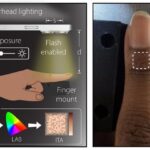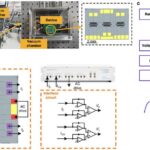
In a groundbreaking advancement for pediatric oncology, researchers at Sweden’s Karolinska Institutet and Lund University have unveiled a novel therapeutic strategy targeting neuroblastoma, a devastating childhood cancer originating in the nervous system. Their experimental approach ingeniously combines the inhibition of two key antioxidant enzymes, PRDX6 and GSTP1, to transform malignant neuroblastoma cells into mature, healthy neurons, significantly impairing tumor progression. This innovative treatment, detailed in the journal Proceedings of the National Academy of Sciences (PNAS), holds substantial promise in overcoming the limitations of existing therapies and ushering in a new era of differentiation-based cancer treatments.
Neuroblastoma predominantly affects infants and young children and is notorious for its aggressive behavior and poor prognosis, especially in cases where the disease has metastasized. Conventional treatment regimens encompass an aggressive combination of surgery, chemotherapy, radiation, and immunotherapy. While these modalities have benefited some patients, those with metastatic disease frequently encounter treatment resistance and relapse. Moreover, survivors of neuroblastoma often endure severe long-term cognitive deficits due to the toxicity of current therapies, underscoring the urgent necessity for more targeted, less harmful interventions.
Differentiation therapy has emerged as an appealing conceptual framework in the fight against neuroblastoma. The therapeutic goal is to induce malignant cells to exit their proliferative, undifferentiated state and instead mature into non-proliferative, functionally specialized cells. Retinoic acid, a derivative of vitamin A, has been the mainstay differentiation agent used clinically; however, its effectiveness is limited by variable patient response rates and the common development of resistance during treatment. This clinical challenge has galvanized efforts to identify alternative molecular targets capable of steering neuroblastoma cells toward benign differentiation.
.adsslot_gLVvBIXtd9{ width:728px !important; height:90px !important; }
@media (max-width:1199px) { .adsslot_gLVvBIXtd9{ width:468px !important; height:60px !important; } }
@media (max-width:767px) { .adsslot_gLVvBIXtd9{ width:320px !important; height:50px !important; } }
ADVERTISEMENT
The Swedish research team turned their attention to two antioxidant enzymes, PRDX6 (Peroxiredoxin 6) and GSTP1 (Glutathione S-transferase Pi 1), both of which play pivotal roles in cellular redox homeostasis within cancer cells. Neuroblastoma cells are characterized by elevated oxidative stress due to their high metabolic activity, leading to an increased dependence on antioxidant systems to neutralize reactive oxygen species (ROS) and prevent apoptotic cell death. Elevated expression of PRDX6 and GSTP1 correlates with more aggressive disease and worse patient outcomes, suggesting that these enzymes are instrumental in cancer cell survival and proliferation.
Through meticulous in vitro experiments and rigorous in vivo studies using mouse models, the researchers demonstrated that dual inhibition of PRDX6 and GSTP1 not only induces selective death in a subset of neuroblastoma cells but also prompts a considerable fraction of surviving cells to differentiate into mature neurons. This phenotypic conversion effectively stymies tumor expansion by depleting the pool of undifferentiated, malignant cells. Importantly, the differentiated neurons exhibited functional characteristics akin to healthy nerve cells, indicating a functional reprogramming rather than mere phenotypic mimicry.
The mechanistic underpinnings of this differentiation induction appear to hinge on disrupting the antioxidant defenses that cancer cells exploit to maintain their malignant state. By pharmacologically inhibiting PRDX6 and GSTP1, the elevated oxidative stress surpasses a critical threshold, leading to selective vulnerability of cancer cells. Unlike traditional cytotoxic strategies that indiscriminately target dividing cells, this approach leverages the cancer cells’ own metabolic fragility to facilitate a therapeutic conversion, thereby potentially minimizing collateral damage to healthy tissues.
A particularly exciting aspect of this study is the translational potential of one of the enzyme inhibitors, which has already been granted orphan drug designation by the US Food and Drug Administration for a separate adult indication. This regulatory recognition not only underscores the compound’s safety profile but also accelerates its candidacy for clinical trials in pediatric neuroblastoma. The planned transition from preclinical models to human studies represents a critical next phase to evaluate safety, dosing parameters, and efficacy in the vulnerable pediatric population.
The repercussions of this research extend beyond neuroblastoma treatment. By exemplifying how targeting metabolic and redox vulnerabilities can induce differentiation in malignant cells, the study paves the way for broader applications in other cancers exhibiting similar dependencies. Furthermore, this enzymatic dual inhibition strategy might be combined synergistically with existing therapies, such as immunotherapy or low-dose chemotherapy, to enhance overall treatment outcomes while reducing long-term adverse effects.
Notwithstanding these promising findings, several challenges remain before clinical implementation can be realized. The complexity of neuroblastoma heterogeneity necessitates further studies to identify biomarkers that predict patient responsiveness to PRDX6 and GSTP1 inhibitors. Additionally, long-term effects of differentiated neurons within the tumor microenvironment need rigorous examination to ensure they do not revert to malignancy or adversely affect surrounding neural tissue. Comprehensive safety assessments are crucial given the delicate nature of pediatric neural systems.
Funding for this pivotal research was primarily provided by prominent Swedish organizations — the Swedish Research Council, the Swedish Cancer Society, the Swedish Childhood Cancer Fund, and the Radiumhemmet Research Funds — underscoring the national commitment to addressing childhood cancer. The researchers have also explicitly disclosed no conflicts of interest, enhancing the credibility and impartiality of the findings.
In summary, the innovative strategy of combining PRDX6 and GSTP1 inhibition to coerce neuroblastoma cells into differentiation marks a paradigm shift in pediatric oncology. By transforming malignant cells into harmless neurons, this approach may radically alter the therapeutic landscape, offering hope for improved survival rates and quality of life among afflicted children. As the scientific community eagerly anticipates forthcoming clinical trials, this study stands as a compelling testament to the power of molecular precision medicine in combating childhood cancers.
Subject of Research: Animals
Article Title: Combined targeting of PRDX6 and GSTP1 as a potential differentiation strategy for neuroblastoma treatment
News Publication Date: 16 June 2025
Web References:
DOI link – 10.1073/pnas.2427211122
References:
Judit Liaño-Pons, Elisa Garde-Lapido, Fenja L. Fahrig, Merle Jäckering, Ye Yuan, Stina Andersson, Lea Schort, Maria Esteve, Sofie Mohlin, Oscar C. Bedoya-Reina, Marie Arsenian-Henriksson, “Combined targeting of PRDX6 and GSTP1 as a potential differentiation strategy for neuroblastoma treatment,” Proceedings of the National Academy of Sciences, online 16 June 2025, doi: 10.1073/pnas.2427211122.
Keywords: Neuroblastoma, Cancer, Antioxidant Enzymes, PRDX6, GSTP1, Differentiation Therapy, Childhood Cancer, Oncology, Pediatrics, Cancer Cells, Pharmacology, Drug Research
Tags: antioxidant enzyme inhibition in cancerdifferentiation therapy for childhood cancersinnovative cancer therapies for childrenKarolinska Institutet researchLund University cancer studyneuroblastoma treatment strategiesnovel therapeutic approaches for aggressive cancersovercoming treatment resistance in neuroblastomapediatric cancer prognosis improvementpediatric oncology advancementsreducing toxicity in cancer treatmenttransforming cancer cells into healthy neurons



